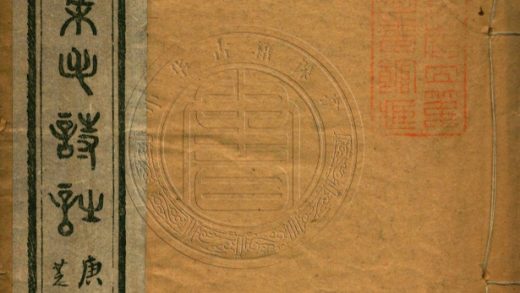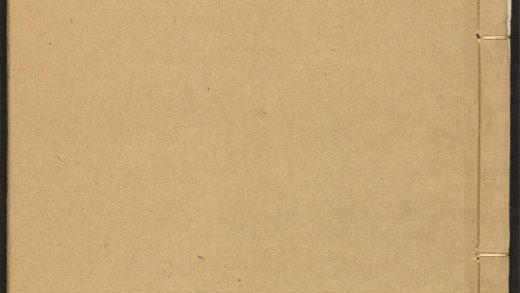【作品基本信息】
| 作者 | 石涛 |
| 品名 | 黄山洁空金碧图轴 |
| 朝代 | 清代 |
| 文件大小 | 18.01MB |
| 分辨率(DPI) | 300×300 |
| 像素大小 | 1358×4421 |
| 尺寸(CM) | 11.49×37.43 |
| 作品数量 | 1 |
| 作品收藏 | 台北故宫博物院 |
| 图片格式 | 默认提供TIF和JPG两个版本 |
基本数据
| 藏品类型 | 绘画 |
| 品名 |
清石涛黄山洁空金碧图 轴 The Purity and Splendor of Huangshan |
| 分类 | 绘画 |
| 作者 | 石涛 |
| 数量 | 一轴 |
典藏尺寸
| 【位置】 | 【尺寸】(公分) |
| 本幅 | 106.3 x 30.8 |
| 全幅 | 220.5×46 |
质地
| 【质地位置】 | 【质地】 |
| 本幅 | 纸 |
题跋数据
| 【题跋类别】 | 【作者】 | 【位置】 | 【款识】 | 【书体】 | 【全文】 |
| 作者款识 | 石涛 | 苦瓜和尚济 | 草书 | 静洗诸缘洁洗空。澹氤金紫碧氤红。从天插下飞龙影。就地擎来总不同。华藏海收谁贮雪。阎浮势抵劫翻风。老夫尽力悲歌起。三礼瞿昙腊夜中。苦瓜和尚济。 |
印记资料
| 【印记类别】 | 【印记】 |
| 收传印记 | 瞎尊者 |
| 收传印记 | 清湘老人 |
| 收传印记 | 膏盲子济 |
| 收传印记 | 搜尽奇峰打艹稿 |
主题
| 【主题类别】 | 【主题(第一层)】 | 【主题(第二层)】 | 【主题说明】 |
| 主要主题 | 山水 | ||
| 其他主题 | 建筑 | 塔 | |
| 其他主题 | 山水 | 云 | |
| 其他主题 | 树木 | ||
| 其他主题 | 山水 | 山径 | |
| 其他主题 | 建筑 | 房舍 | |
| 其他主题 | 人物 | 高士(士人、隐士) |
技法
| 【技法】 | 【技法细目】 |
| 写意 | |
| 皴法 | 披麻皴 |
| 苔点 |
参考数据
| 【类别】 | 【参考数据】 |
| 内容简介(中文) | 黄山旧名「黟山」,唐代天宝年间改定今名,山势奇伟,跨越安徽歙县、黟县、太平、休宁四地。明清以来,黄山清绝之景常写入画图,在笔墨和构图上的变化,往往令人称奇,其中以渐江、梅清、石涛三者的成就深受肯定,世人有「石涛得黄山之灵,梅清得黄山之影,渐江得黄山之质」的论评。此幅黄山图为罗家伦先生捐赠本院收藏,笔墨、构景均有新意,自然流露黄山之美。 |
| 内容简介(英文) | The I Mountains were changed in name to the present Huang (“Yellow”) in the T’ien-peo era (742-755). The unusual formations of these peaks extend across She-hsien, I-hsien, T’ai-p’ing, and Hsiu-ning in Anhwei. Since the Ming and Ch’ing period, the otherworldly scenery of the area has often been rendered in art with many fascinating depictions and interpretations of style and composition. Those most praised for their achievements were Hung-jen, Shih-t’ao and Mei Ch’ing. It is said that “Shih-t’ao got the spirit of the Huang Mountains, Mei Ch’ing its imagery, and Hung-jen its qualities”. This work, donated to the Museum by Mr. Lo Chia-lun, is quite innovative in brushwork and composition, revealing the natural beauty of the Huang Mountains. |
| 内容简介(中文) |
石涛(公元一六四二-一七○八年),广西桂林人。原名朱若极,为明皇族后裔。明亡后出家为僧,曾游历安徽宣城,及金陵、扬州等地。作画落笔狂纵恣肆,用墨更淋漓多变,倡我用我法,脱尽前人窠臼。 安徽黄山因山势奇伟,自明清以来,即经常被写入画幅,其中尤以石涛、渐江、梅清三家所绘,最受肯定。本幅为罗家伦夫人张维桢女士捐赠文物,笔墨、布局俱有新意,自然展露出黄山的灵动之气。(20100103) |
| 内容简介(英文) |
Shitao (1642-1708),native to Guilin, Guangxi; original name Zhu Ruoji was from the Ming imperial family. After the Ming fall, he became a Buddhist monk, traveling to Xuancheng (in Anhui), Jinling, and Yangzhou. His brushwork was unbridled and natural, his use of ink often watery and varied. Advocating his own method, he sought to avoid ancient stereotypes. The marvelous scenery of Huangshan in Anhui is often found in Ming and Qing dynasty paintings, with those by such artists as Shitao, Jianjiang, and Mei Qing being the most popular. In this work donated to the Museum by Ms. Zhang Weizhen (wife of Luo Jialun), the brushwork and composition are both innovative, naturally revealing the spirit that pervades the Huangshan area.(20100103) |
| 收藏着录 | 罗家伦夫人张维桢女史捐赠书画目录,页103、167 |
【作品展示】

清石涛黄山洁空金碧图轴




